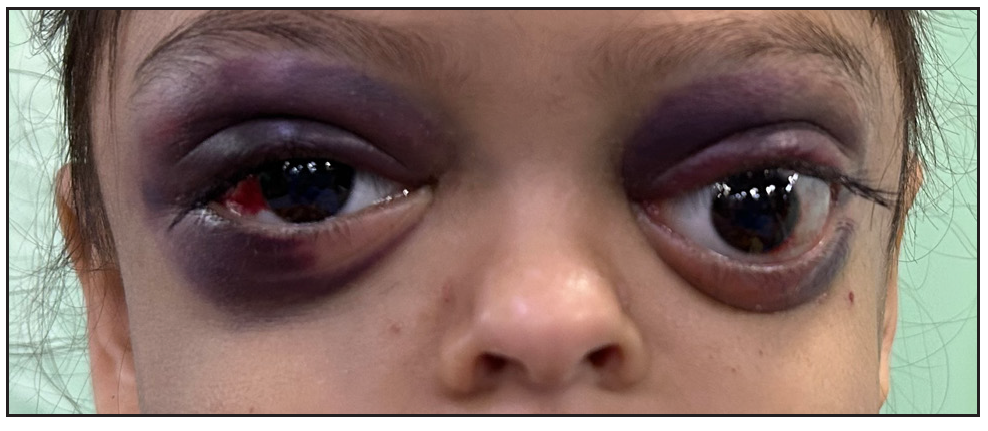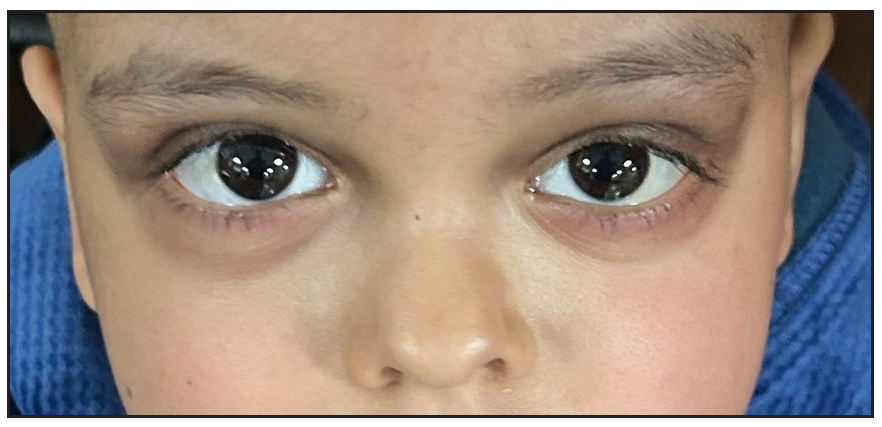We report the case of a five-year-old girl who presented with progressive painful abdominal distension and bilateral periorbital ecchymosis, subconjunctival haemorrhage, and proptosis (left eye) for two weeks [Figure 1]. The swelling was soft with no limitation of ocular movements. Imaging (ultrasonography, computed tomography) showed a large left suprarenal mass. Bone marrow examination revealed infiltration by small round blue cells, clinching a diagnosis of metastatic neuroblastoma. Post-chemotherapy, there was a striking improvement in the ocular findings [Figure 2].

Export to PPT

Export to PPT
Orbital metastasis is seen in 10–20% of neuroblastoma cases, often presenting with a characteristic ‘raccoon eye’ appearance due to the presence of retrobulbar metastases. Proptosis in neuroblastoma is typically asymmetrical and soft, with a normal range of ocular movements, vis-à-vis leukemic ocular metastases (usually bilateral proptosis) and metastatic sarcoma (firm-to-hard and limited range of ocular movements).
留言 (0)